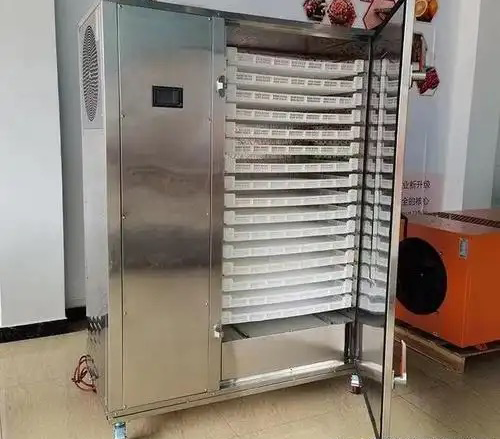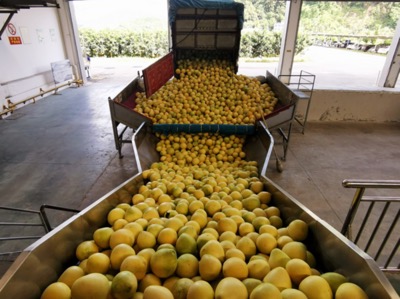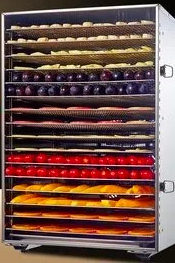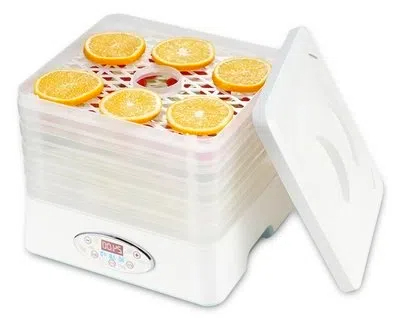
Content Menu
● Understanding Heat Pump Dryers
>> Advantages of Heat Pump Dryers
● Importance of Cleaning the Condenser
● Tools You Will Need
● Step-by-Step Cleaning Process
>> Step 1: Safety First
>> Step 2: Accessing the Condenser
>> Step 3: Removing the Condenser
>> Step 4: Cleaning the Condenser
>>> Using a Brush or Vacuum
>>> Washing with Soapy Water
>> Step 5: Drying the Condenser
>> Step 6: Reinstalling the Condenser
>> Step 7: Final Checks
● Maintenance Tips for Your Heat Pump Dryer
● Troubleshooting Common Issues
>> Problem 1: Longer Drying Times
>> Problem 2: Unpleasant Odors
>> Problem 3: Error Codes Displayed
● Benefits of Regular Maintenance
● Conclusion
● FAQ
>> 1. How often should I clean my heat pump dryer's condenser?
>> 2. What happens if I don't clean the condenser?
>> 3. Can I use any cleaning solution on my condenser?
>> 4. Is it safe to clean my dryer myself?
>> 5. What should I do if I encounter issues during cleaning?
Cleaning the condenser of your heat pump dryer is an essential maintenance task that ensures optimal performance and longevity of the appliance. This guide will walk you through the process step-by-step, providing tips, best practices, and insights into why regular cleaning is crucial.

Understanding Heat Pump Dryers
Heat pump dryers are energy-efficient appliances that use a heat pump to dry clothes. Unlike traditional dryers that expel hot air outside, heat pump dryers recycle the air within the drum, making them more environmentally friendly and cost-effective.
Advantages of Heat Pump Dryers
- Energy Efficiency: They consume less electricity compared to conventional dryers, often reducing energy bills significantly.
- Gentle on Fabrics: The lower drying temperatures are less harsh on clothes, helping to prevent wear and tear.
- Versatile: Suitable for a variety of fabrics and drying needs, including delicate items that require special care.
- Eco-Friendly: By recycling air instead of venting it outside, heat pump dryers reduce carbon emissions and environmental impact.
Importance of Cleaning the Condenser
The condenser in a heat pump dryer plays a vital role in its operation. It helps to remove moisture from the air used to dry clothes. Over time, lint and debris can accumulate in the condenser, leading to reduced efficiency and potential breakdowns. Regular cleaning helps in:
- Maintaining Optimal Drying Performance: A clean condenser ensures that moisture is effectively removed from the air, allowing for faster drying times.
- Reducing Energy Consumption: When the condenser is clogged, the dryer has to work harder, consuming more energy. Regular cleaning keeps energy costs down.
- Extending the Lifespan of the Dryer: Preventing overheating and strain on components through regular maintenance can prolong the life of your appliance.
Tools You Will Need
Before starting the cleaning process, gather the following tools:
- Soft brush or vacuum cleaner with a brush attachment
- Warm soapy water
- Soft cloth or sponge
- Screwdriver (if needed)
- Bucket or container for water
- Towels for drying
Step-by-Step Cleaning Process
Step 1: Safety First
Before you begin cleaning, ensure that your dryer is unplugged from the power source. This will prevent any accidents while you are working on it. Additionally, make sure the area around your dryer is clear to avoid tripping hazards.
Step 2: Accessing the Condenser
Most heat pump dryers have a removable condenser unit. Check your user manual for specific instructions on how to access it. Typically, you will need to:
1. Open the dryer door.
2. Locate the condenser cover (usually at the bottom or back).
3. Remove any screws or clips holding it in place.

Step 3: Removing the Condenser
Gently pull out the condenser unit from its compartment. Be cautious as some water may still be present in the unit. Place a towel or container underneath to catch any drips.
Step 4: Cleaning the Condenser
Using a Brush or Vacuum
1. Use a soft brush to gently remove any lint or debris from the surface of the condenser.
2. Alternatively, use a vacuum cleaner with a brush attachment to suck away dirt and lint.
3. Pay special attention to any crevices where lint may accumulate.
Washing with Soapy Water
1. Fill a bucket with warm soapy water.
2. Dip a soft cloth or sponge into the solution and wipe down all surfaces of the condenser.
3. Rinse with clean water and ensure no soap residue remains.
4. For stubborn grime, let the soapy water sit for a few minutes before scrubbing.
Step 5: Drying the Condenser
After washing, allow the condenser to air dry completely before reinstallation. This step is crucial to prevent moisture buildup inside your dryer. You can speed up drying by using towels to absorb excess water or placing it in a well-ventilated area.
Step 6: Reinstalling the Condenser
Once dry, carefully place the condenser back into its compartment:
1. Align it properly and push it back until it clicks into place.
2. Secure any screws or clips you removed earlier.
3. Double-check that everything is tightly fitted before proceeding.
Step 7: Final Checks
Before plugging your dryer back in:
- Ensure that all parts are securely fastened.
- Check for any remaining debris around the condenser area.
- Inspect hoses for blockages or wear; replace if necessary.
Maintenance Tips for Your Heat Pump Dryer
To keep your heat pump dryer running efficiently, consider these maintenance tips:
- Regular Cleaning: Clean the condenser every few months or more frequently if you use your dryer often.
- Lint Filter Maintenance: Always clean the lint filter after each use to prevent blockages that can affect airflow and efficiency.
- Check Hoses: Inspect hoses for any signs of wear or blockages regularly; replace them if they appear damaged.
- Professional Servicing: Consider having your dryer serviced by professionals annually for thorough maintenance; they can check internal components that may not be accessible during regular cleaning.
- Monitor Performance: Keep an eye on drying times; if they increase significantly, it may indicate that maintenance is due.
Troubleshooting Common Issues
Even with regular maintenance, issues may arise with your heat pump dryer. Here are some common problems and how to troubleshoot them:
Problem 1: Longer Drying Times
If you notice that your clothes are taking longer than usual to dry:
- Check if the lint filter is clean.
- Ensure that the condenser is free of debris.
- Inspect hoses for blockages; clear any obstructions found.
Problem 2: Unpleasant Odors
If you detect musty smells coming from your dryer:
- Clean both the lint filter and condenser thoroughly.
- Check for moisture buildup in hidden areas; dry these spots completely.
Problem 3: Error Codes Displayed
Many modern heat pump dryers have error codes indicating specific issues:
- Refer to your user manual for guidance on what each code means.
- If unable to resolve based on manual instructions, contact customer support for assistance.
Benefits of Regular Maintenance
Engaging in regular maintenance not only enhances efficiency but also provides several benefits:
- Cost Savings: Reduced energy consumption leads to lower utility bills over time.
- Improved Performance: A well-maintained dryer operates more effectively, ensuring clothes are dried quickly without damage.
- Peace of Mind: Knowing your appliance is functioning correctly reduces anxiety about potential breakdowns during peak usage times.
Conclusion
Cleaning your heat pump dryer's condenser is a straightforward yet vital task that can significantly impact its efficiency and lifespan. By following this step-by-step guide, you can ensure that your appliance operates at peak performance while saving energy and prolonging its life.
Regular maintenance not only enhances drying efficiency but also reduces energy costs over time. Make it a habit to check and clean your dryer regularly for optimal results.

FAQ
1. How often should I clean my heat pump dryer's condenser?
It is recommended to clean your heat pump dryer's condenser every three months or more frequently if you use it heavily.
2. What happens if I don't clean the condenser?
Failure to clean the condenser can lead to reduced drying efficiency, higher energy consumption, and potential damage to your dryer.
3. Can I use any cleaning solution on my condenser?
It is best to use mild soapy water for cleaning. Avoid harsh chemicals that could damage components.
4. Is it safe to clean my dryer myself?
Yes, as long as you follow safety precautions such as unplugging the appliance before cleaning.
5. What should I do if I encounter issues during cleaning?
If you face difficulties during cleaning or if your dryer shows signs of malfunctioning, consult a professional technician for assistance.












